Most businesses focus purely on “getting more customers”, but there are two sides to the equation. If you grow your customers but they don’t stay, then really you are wasting time and running on a treadmill. I like to think of this as trying to fill a bucket with a hole in it. Not every customer will stay, some “churn” is normal, but generally you can improve your customer retention and then grow revenue in a profitable way. The key is to focus on delighting your customer, setting expectations and having an efficient onboarding process.
What is Customer Retention?
Customer Retention is the ability of a company or product to “retain” it’s customers over a period of time. High customer retention is a positive sign and means customers are finding value in the companies product or service. This also helps to increase your customers lifetime value (CLV) which include the average length of contract multiplied by the price they pay. Low retention generally means users are dissatisfied with your service or have a bad experience.
Timestamps 👇
- 0:00 – intro
- 0:39 – What is Customer Retention?
- 1:20 – Customer Lifetime value
- 1:55 – Net Revenue Retention Rate Formula
- 2:27 – How to Improve customer retention? Reduce Churn
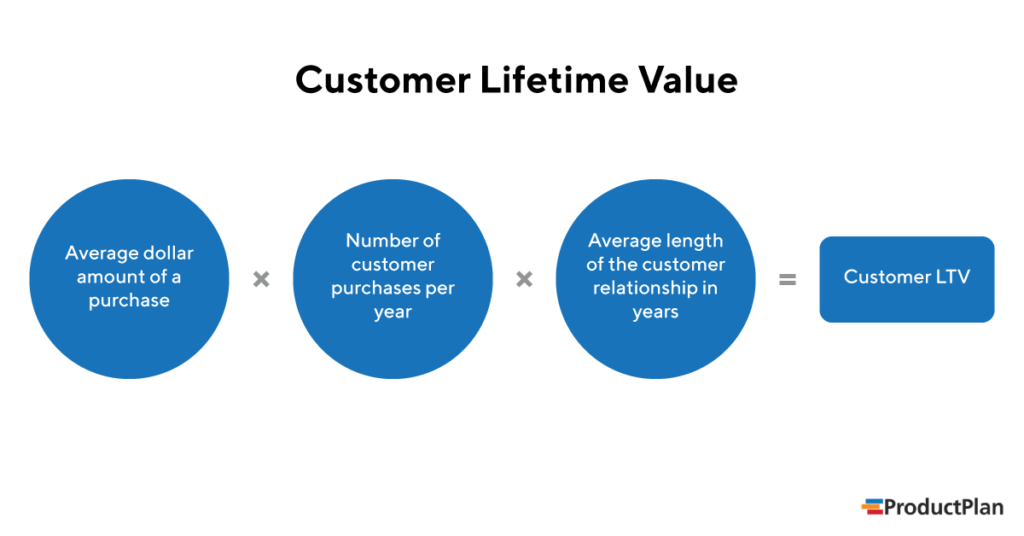
customer-lifetime-value-.Source: Product Plan
Famous SaaS (Software as a Service) companies with very high retention include multi cloud company Snowflake (SNOW), which has a Net revenue retention rate of 178% as of January 31, 2022. In addition, to cybersecurity company Crowdstrike (CRWD) which has a dollar based retention rate of 128%. The company uses a “land and expand” approach to upsell their customers extra “modules” which increases their overall dollar retention.
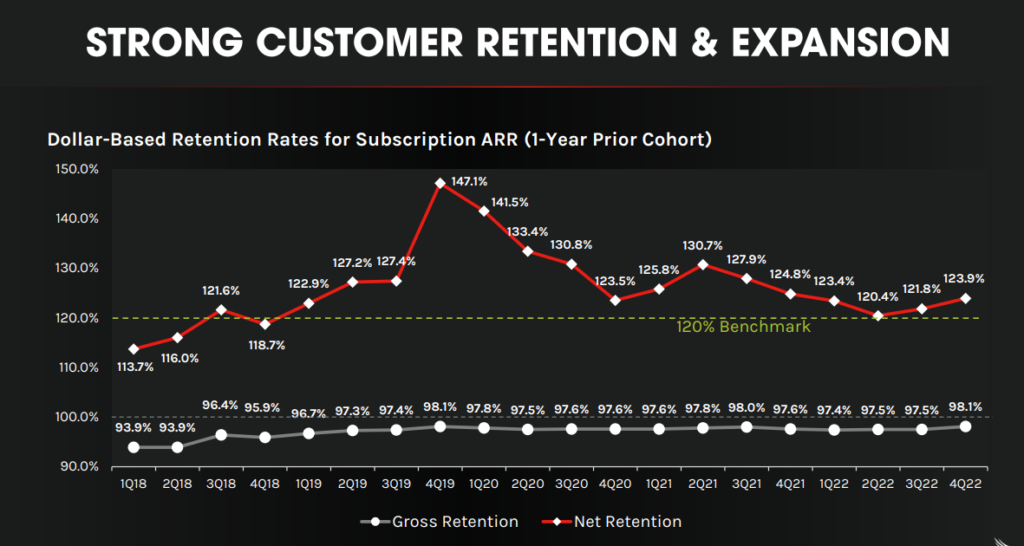
Retention Rate Crowdstrike
What is Net Revenue Retention?
Many SaaS (Software as a Service) companies use “Net Revenue Retention (NRR) as a key quality metric. Net Revenue Retention calculates total revenue (including expansion) minus revenue churn (contract expirations, cancelations, or downgrades).
Net Revenue Retention = Monthly Recurring Revenue (MRR) at Start of Month + Expansions + Upsells – Churn – Contractions.
Breaking this down:
- Monthly/Annual Recurring Revenue (MRR/ARR) – this value includes all recurring revenue from the period you’re measuring (monthly or annual).
- Expansion Revenue (ER) – include all expansion revenue such as cross-sells and upsells from the period being measured.
- Contraction Revenue (CR) – this includes all revenue shrinkage for an account, such as license reductions, downgrades, etc.
- Revenue lost through churn – this is the dollar value of accounts that have churned for the period being measured.
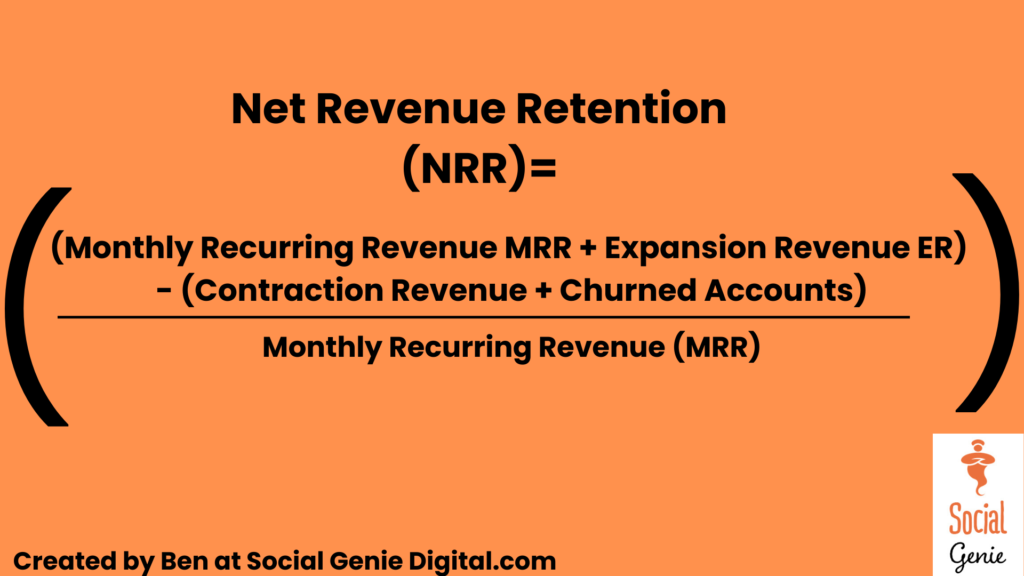
Net Revenue Retention Rate. Social Genie Digital.com
Venture capitalist Seth Levine differentiates NDR and NRR as follows:
- Net Dollar Retention (NDR) measures the average percentage change of a single account’s revenue over the first 12 months of that account’s lifetime.
- Net Revenue Retention (NRR) measures the percentage of revenue gained across all customers. This also covers a rolling 12-months period.
How to improve retention? | 7 Pro Tips |
We always start with recommended our clients, breakdown their retention rates into two parts.
- Active Cancellations
- Payment Failures
If your churn is coming primarily from Active cancelations then their are a few methods you can use to improve this.
Tip.1 Manage Expectations
Ensure your product “does what it says on the tin” and provides the “expected value” users expect (and more). Is the marketing align with the reality? Are all features advertised fully working right now or in Beta?
Tip 2. Ensure your product “Delights your customer”
This is obvious but many companies don’t focus on this. It all starts with “talking to your users” and finding out what they truly value about your product or service. They may actually be using your product in a different way to expected or signed up for a different reason. You can look at product reviews, helpdesk queries/complaints and even run focus groups, interview/speak to customers on the phone or contact via email. The key is to filter the signal for the noise and highlight the “common threads” you can tackle.
NPS (Net Promoter scores) can also be useful in this regard as they ask “How likely are you to recommend the product to a friend?”. You can also use features which ask “How can we improve?” and get customer suggestions or even better get them to vote on new features.
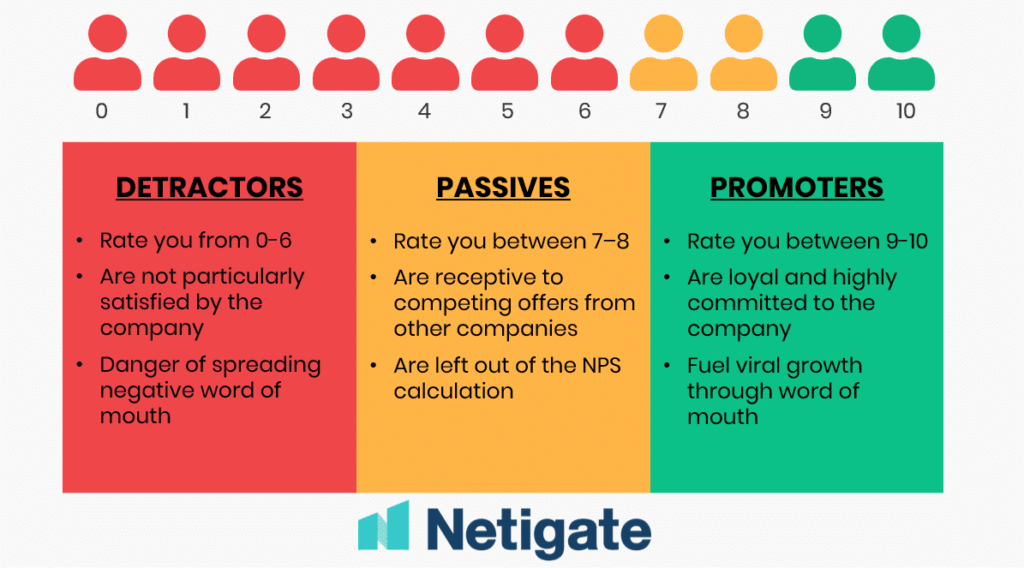
Net Promoter Score (NPS). Source: Netigate
Tip 3. Have a Great onboarding Process
Ensure your users are onboarded fast, efficiently and receive the “instant value” they were promised. Have welcome/guide videos ready or even use a virtual concierge to help guide through product features. Have a list of common FAQ (Frequently Asked Questions) in addition to the ability to contact someone via live chat, video or even phone if they have any issues. Fast response times for helpdesk queries is a must and even a “confirmation message” such as “we have received your query and will be back to you within 24 hours helps out massively”.
Tip 4. Plan Optimisation
Aim to get more customers on longer recurring subscription plans, for example, Annual, Quarterly, 6 month plans etc. Many companies offer this upon signup with a discount to incentivise. But you can also offer this after the customer has used your product for the first month and are happy with it. You can email and say, we want to offer you a major “dollar discount” or “2 months free” if you wish for us to swap you over to the annual plan. Make this process as seamless as possible where customers can just click one button to change offer as opposed to having refill in payment details, any friction reduces conversion rates. We find plain text and personal emails work best with this. For our clients we generally see 300% better customer lifetime value for longer contracts, even with a large discount at the start.
Tip 5. Have a Great Offboarding Process
The onboarding is obvious, but most companies overlook “offboarding”. Not every customer will stay no matter how great your product so If a customer wishes to leave you need to let them and not hold them “hostage”. For our clients, in approximately 1/3 of cases customers are leaving for a reason which has nothing to do with your product or service. They may just be experiencing “subscription fatigue” or just wish to have a break. There should be a little friction in the offboarding process to avoid a “musical chairs” situation but it should be easy and information captured.
Some great tips for offboarding include, “Pause plans”, but be sure to add an end to the pause. For example, pause for 2 months, 6 months etc. The key is to keep the relationship open for future “reactivation” and don’t burn your bridges. You can also offer to keep the account open and all information saved. You should also include an exit survey (but not too long) we like to ask two to three key questions.
- “Why are you leaving?”
- “What did you love about our product?”
- “why did you sign up?”
This data can then be used to retarget specific offers back to the person based upon the reason they signed up. For example, they may have left because a specific feature isn’t available so you could reach out to them again when that feature is available. The “Why did you sign up?” or “what did you love?” questions also help to spark “reminiscing” and reignite an emotional connection. Think of this as like a relationship break up, don’t be needy but still find out the key points of why the person is leaving and highlight parts you can improve. Upon request to cancel you can also offer an “irresistible offer” cell phone companies often do this and have somebody call you when you wish to cancel with a great offer such as free upgrade, major discount or free period.
Tip 6. High Switching Costs
Increase the switching costs of your product or service. This could be done by getting users to upload lots of their data or even just fill out their profile with image and description. This introduces a “sunk cost” element and is one of the key reasons why platforms such as Facebook have high retention, in addition to network effects. You can also “layer on” multiple services which you may even be giving away for free but makes it harder and more difficult for a customer to switch. Training courses, community, user guides also can increase switching costs as if they leave they may have to relearn another platform.
Tip 7. Reduce Payment Failures.
This is a technical method but often very impactful. All payment systems should be tested both with a “sandbox” during the software development stage and with real customers. We also recommend verifying payment details and getting a user to upload a backup payment method. Also for very long term customers, credit card update emails can be useful.

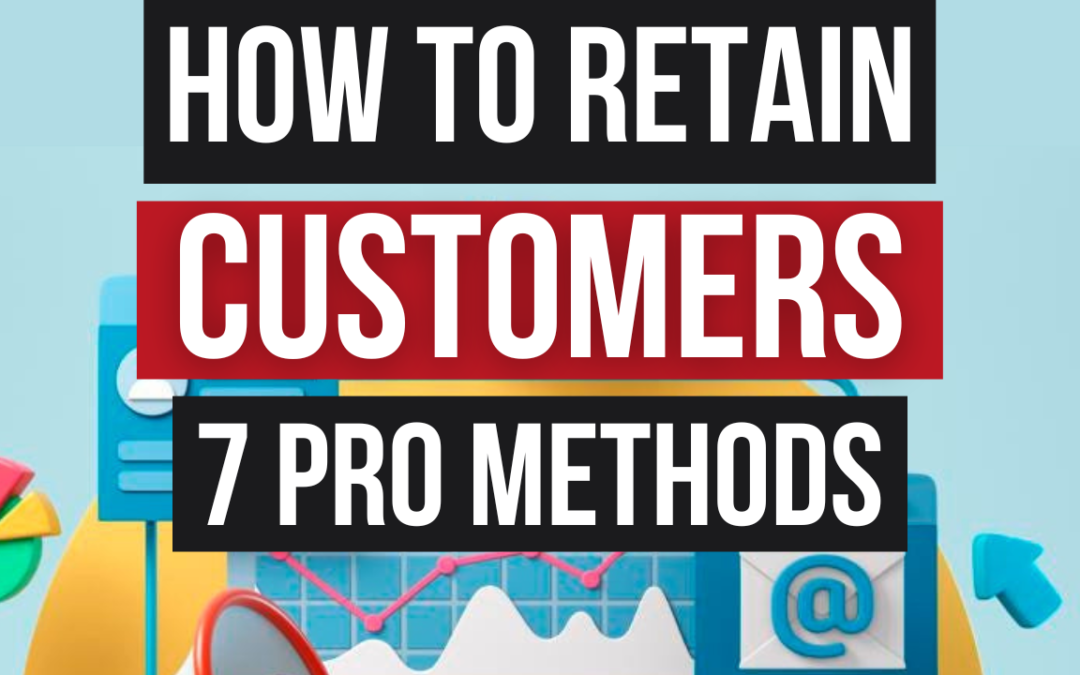
Recent Comments